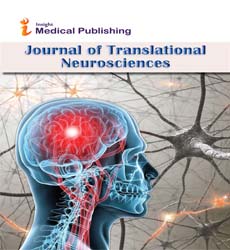Applications of Neuro-electrophysiology in Rehabilitation Sciences
Chia-Hsiung Cheng
1Department of Occupational Therapy and Graduate Institute of Behavioral Sciences, Chang Gung University, Taoyuan, Taiwan
2Healthy Aging Research Center, Chang Gung University, Taoyuan, Taiwan
3Department of Psychiatry, Chang Gung Memorial Hospital, Taoyuan, Taiwan
- *Corresponding Author:
- Chia-Hsiung Cheng
Department of Occupational Therapy and Graduate Institute of Behavioral Sciences
Chang Gung University, Taoyuan, Taiwan
Tel: +88632118800
E-mail: chiahsiung.cheng@gmail.com
Received date: December 09, 2015, Accepted date: December 10, 2015, Published date: December 17, 2015
Citation: Cheng CH. Applications of Neuroelectrophysiology in Rehabilitation Sciences. J Transl Neurosci. 2016, 1:1.
Copyright: © 2016 Cheng CH. This is an open-access article distributed under the terms of the Creative Commons Attribution License, which permits unrestricted use, distribution, and reproduction in any medium, provided the original author and source are credited.
Abstract
Editorial
Since the first recordings of scalp electroencephalography (EEG) by Hans Berger in 1929, and later the first recordings of magnetoencephalographic (MEG) activity by David Cohen in 1972, the neurophysiological signals have been increasingly applied in psychology and cognitive neuroscience research. In the clinical application, the spontaneous, ongoing EEG and/or MEG recordings continue to be the essential procedure, up to the present, to monitor and detect the epileptic spikes in patients with epilepsy. In the basic research, event-related potential (ERPs) or event-related fields (ERFs) offer an alternative window to non-invasively examine the working human brain, ranging from characterization of cognitive deficits to demonstration of change profiles after receiving intervention. For example, mismatch negativity (MMN), discovered by Risto Naatanen in 1978, has been widely investigated in patients with neurological, psychiatric, and neurodevelopmental disorders. The generation of MMN is based on the mechanisms of sensory memory, involuntary attention switch, and possibly predictive coding hypothesis. Although it is elicited through an oddball paradigm without the subject’s behavioral performance, this signal could still serve as a cognitive index of lifespan changes, illness severity, disease progression and outcome measure of treatment. Another example is sensory gating, which represents the brain’s ability to filter out irrelevant sensory information. After the first clinical study in schizophrenia in 1982, the sensory gating paradigm, in conjunction with genotyping and neurotransmitter studies, has been extensively examined in psychiatric diseases.
Neurorehabilitation emphasizes evidence-based practice and sheds light on the connection between behavioral outcome and neural activation. Non-invasive neuroimaging tools like MEG, EEG, functional magnetic resonance imaging, and transcranial magnetic stimulation will contribute a certain role to understand the cerebral operations. In addition to MMN and sensory gating, other electrophysiological signals, such as N170 (face perception), N200 (inhibition control), P300 (target detection), N400 (word processing), and P600 (sentence processing) still have potentials to be imaging markers in the rehabilitation research. Over the past decade, the randomized control trials have accumulated abundant evidence in the motor rehabilitation by using different intervention strategies, and revealed the promising improvement in motor control, daily function, and quality of life. Inspection from the translational research, further deep investigations on the neural mechanisms of behavioral changes will turn over a new leaf in rehabilitation practice.
Open Access Journals
- Aquaculture & Veterinary Science
- Chemistry & Chemical Sciences
- Clinical Sciences
- Engineering
- General Science
- Genetics & Molecular Biology
- Health Care & Nursing
- Immunology & Microbiology
- Materials Science
- Mathematics & Physics
- Medical Sciences
- Neurology & Psychiatry
- Oncology & Cancer Science
- Pharmaceutical Sciences
